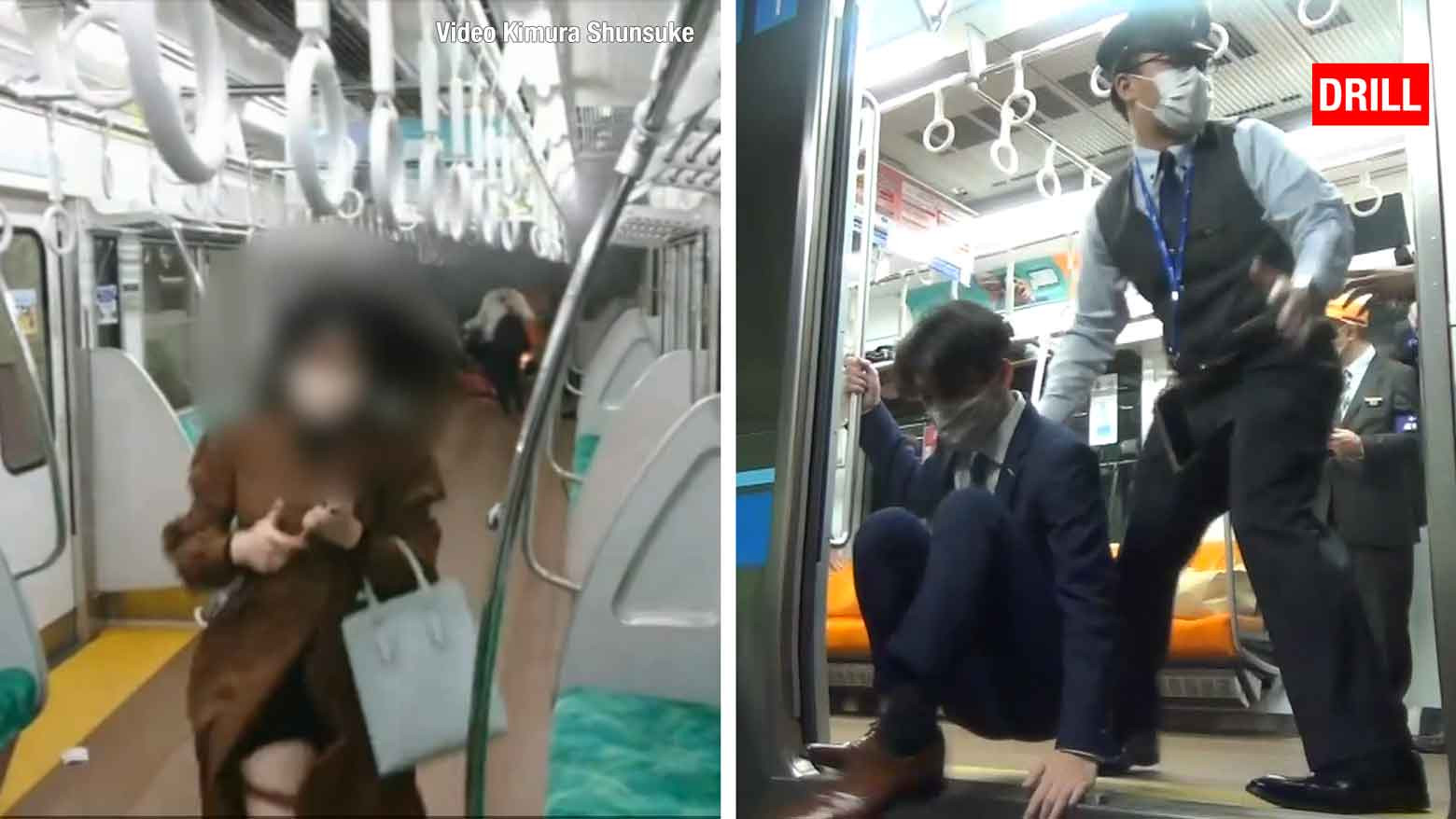Police detained 25-year-old Hattori Kyota on suspicion of attempted murder and arson after his Halloween arrest. He was dressed as the Joker from the Batman series when he allegedly stabbed a 72-year-old male passenger with a knife and used lighter fluid to start a fire.
The stabbing victim suffered life-threatening injuries but survived. Another 16 people suffered smoke inhalation.
Passengers trying to flee the Keio Line train were forced to clamber through carriage windows when the doors stayed closed even after the train came to a stop.
That has prompted the safety review.

The train doors remain closed
Train operators across the country have been conducting drills that simulate similar incidents. Of key concern is whether carriage doors should open in an emergency.
While the train targeted by Hattori made an emergency stop at the nearest station, its doors remained closed.
Keio Line officials say the conductor didn't open the doors because the train did not stop at its correct position.
The conductor was concerned that passengers could fall on to the rail track with potentially fatal consequences if they were hit by another train.

NHK surveyed 22 major railway operators on their policy regarding emergency door handles. Nine companies said they should be operated only by staff—or passengers under their supervision.
Six companies said they believed passengers should have access to the emergency handles. The remaining seven firms are yet to take a stance.
"There should be a common rule"
A railway security expert is calling on all the operators to come to an agreement. "Inconsistencies on security measures will confuse passengers," says Kansai University Professor Abe Seiji. "The transport ministry should lead discussions and create a common emergency manual."
Transport Minister Saito Tetsuo says the issue is on the agenda. "Government officials are exchanging opinions with business operators. And we hope to soon announce the measures to prevent a recurrence of such cases."

In other attacks this year, a man sprayed flammable liquid on the floor of a bullet train in Kyushu last month and started a fire. No one was injured. In August, a man brandished a knife on an Odakyu Line train in Tokyo, injuring nine.

